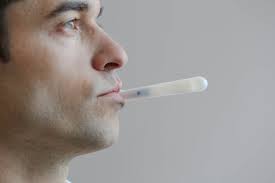Update January 1, 2022 – this series of articles was written in 2014 and to date DOT has not approved oral fluid testing. The Department of Health and Human Services (DHHS) has approved oral fluid testing but DOT has not yet adopted. Our best guess is late 2022 for DOT approval of oral fluid testing.
Learn About the History and Development of Oral Fluid Testing
The use of oral fluid for alcohol testing has been in place since 1994 when it was first allowed to be used as a screening test for alcohol. In order to meet this goal, the alcohol screen devices were required to meet certain specifications as designed by National Highway Traffic Safety Administration (NHTSA).
The original Model Specifications for screening devices that could measure alcohol were published in the Federal Register on August 2, 1994, by NHTSA in order to meet the planned implementation date of January 1, 1995 for alcohol testing. The impetus for the development of these particular Model Specifications was for the implementation of required alcohol testing for DOT regulated employers as required in the “Omnibus Act*” The “Model Specifications for Screening Devices to Measure Alcohol in Bodily Fluids” established performance criteria and methods for testing alcohol screening devices to measure alcohol content. It is these modal specifications that are required to be met in order for a screen test device to test for alcohol in bodily fluids. There is another set of Model Specifications in place for Evidential Breath Alcohol testing devices.
The use of Oral Fluid for testing for drugs of abuse has been in place for a number of years. Prior to April 1998, it had been used in several different settings including the general or non-regulated workplace. There was not established standards in place and oral fluid testing was not an allowable test methodology for DOT-regulated employers.
On April 28-30, 1997, SAMHSA held a three day open meeting of the Drug Testing Advisory Board. The purpose of this meeting was to explore other methods and specimens that could potentially be used to test for drugs of abuse. The specimen sources and testing methodologies that were discussed were oral fluid, hair, sweat patch, and urine on–site testing devices and was appropriately titled “Drug Testing of Alternative Specimens and Technologies”.
This meeting was the beginning of exploring the different specimens and testing methodologies that could be used by DOT and other Federal agencies in the future. After the initial meeting in April 1997, there was a series of meetings by DTAB to explore the use of alternative specimens in workplace drug testing. Meetings and discussions continue to this day exploring and discussing the use of alternative specimens, not only at the DTAB meetings, but also at the annual meetings of drug test associations.
During 2006, there was an effort by SAMHSA to publish proposed Mandatory Guidelines for Federal Agency Drug Testing incorporating alternative specimens. These proposed Mandatory Guidelines, which included testing using oral fluids, never saw the light of day as there was vigorous opposition from various Federal Agencies, including DOT. Several of the Federal Agencies recognized significant issues in the guidelines which were annotated in comments to Office of Management and Budget (OMB). The proposed guidelines were required to be sent to all Federal Agencies for comment by Office of Management and Budget.
The next article will go into the further development of oral fluid for use by DOT and DOT regulated employers.
*In a future article, there will be a discussion of the Omnibus Act and the impact of that Act on the drug and alcohol test industry.
More on Oral Fluid Testing







